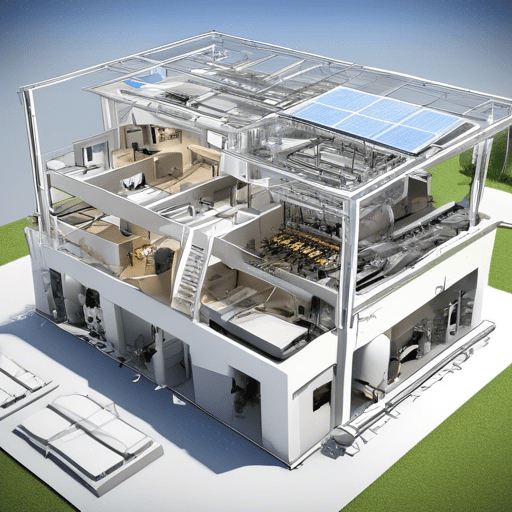If your enquired construction project costs are soaring considerably higher than the planned expenses, MEP value engineering is a proven

In the realm of MEP (Mechanical, Electrical, and Plumbing) engineering, optimizing building designs for energy efficiency is a top priority. One of the most effective tools in achieving this goal is energy modeling. This blog explores the significance of energy modeling and how it aids MEP engineers in creating energy-efficient building designs. We will delve into the different types of energy modeling tools available and highlight their benefits. As experts in MEP Design and Engineering at InnoDez, we understand the profound impact of energy modeling on sustainable building practices.
Buildings are significant contributors to energy consumption and carbon emissions. Designing and operating buildings for energy efficiency is essential to mitigate their environmental impact.
Energy-efficient buildings not only have a smaller environmental footprint but also result in cost savings for owners and occupants through reduced utility bills.
Well-designed energy-efficient buildings offer better indoor air quality, temperature control, and lighting, creating healthier and more comfortable spaces for occupants.
Energy modeling is a simulation process that involves creating a virtual representation of a building to assess its energy performance. This includes evaluating energy consumption, identifying areas of improvement, and predicting the impact of design changes.
Energy modeling allows MEP engineers to optimize building designs during the early stages of a project. By assessing various design alternatives, engineers can make informed decisions that significantly impact energy efficiency.
MEP engineers use energy modeling to predict a building’s energy performance under different scenarios, such as variations in climate, occupancy, or equipment. These predictions help refine design choices.
Energy modeling tools aid in calculating heating and cooling loads, helping MEP engineers size HVAC systems accurately. This ensures that equipment is neither undersized nor oversized, optimizing efficiency.
Energy modeling helps identify passive design strategies, such as orientation, shading, and insulation, that can reduce the building’s energy consumption without relying on active systems.
Many green building certifications, like LEED (Leadership in Energy and Environmental Design), require energy modeling to demonstrate compliance with energy efficiency criteria.
This type of modeling assesses the overall energy performance of the entire building. It evaluates the impact of different systems, such as HVAC, lighting, and envelope, on energy consumption.
For a more granular approach, MEP engineers use detailed HVAC systems modeling to evaluate the performance of heating and cooling systems, including specific equipment selections.
Lighting and daylighting modeling focuses on assessing the energy consumption of lighting systems and how natural daylight can be harnessed to reduce energy usage.
CFD modeling helps analyze air movement and temperature distribution within a space. It aids in optimizing HVAC design and occupant comfort.
Energy modeling uncovers potential design flaws or inefficiencies early in the design process, allowing for corrections before construction begins.
By identifying the most efficient design strategies, energy modeling helps reduce both construction and operational costs.
MEP engineers can provide clients with accurate predictions of a building’s energy performance, supporting informed decision-making.
Energy modeling contributes to lower energy consumption and reduced environmental impact, aligning with sustainability goals.
As experts in MEP Design and Engineering, InnoDez places a strong emphasis on energy modeling. Our team is equipped with the knowledge and tools to assess building designs comprehensively, optimizing energy efficiency while minimizing costs. By harnessing the power of energy modeling, we help clients achieve their sustainability objectives, reduce operational expenses, and create healthier indoor environments.
Energy modeling is an indispensable tool in the arsenal of MEP engineers striving to design energy-efficient buildings. By providing early insights, predicting performance, and identifying design improvements, energy modeling is a cornerstone of sustainable building practices. As experts at InnoDez, we leverage energy modeling to ensure that our MEP designs meet the highest standards of energy efficiency, cost-effectiveness, and environmental responsibility. By embracing energy modeling, we contribute to a greener, more sustainable future for the built environment.
About Author
InnoDez